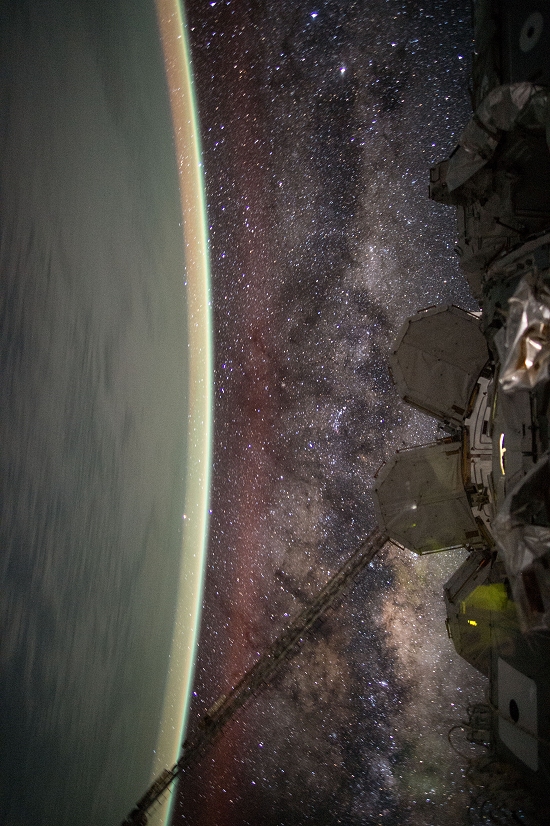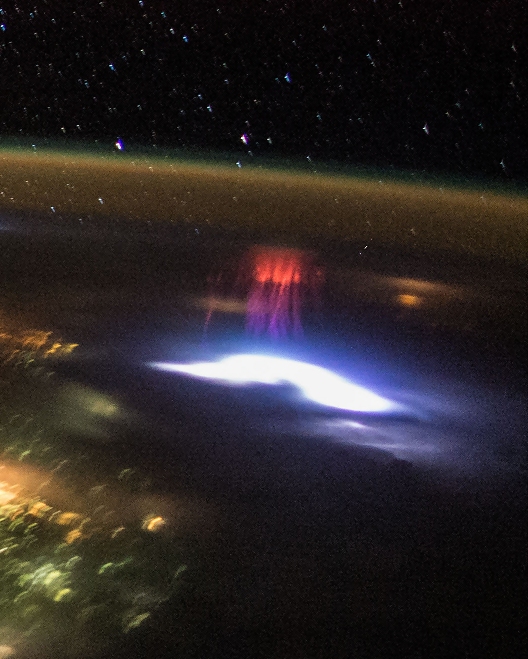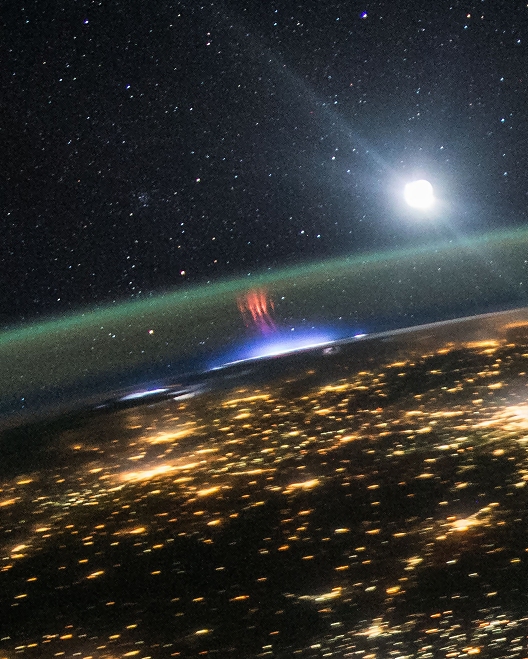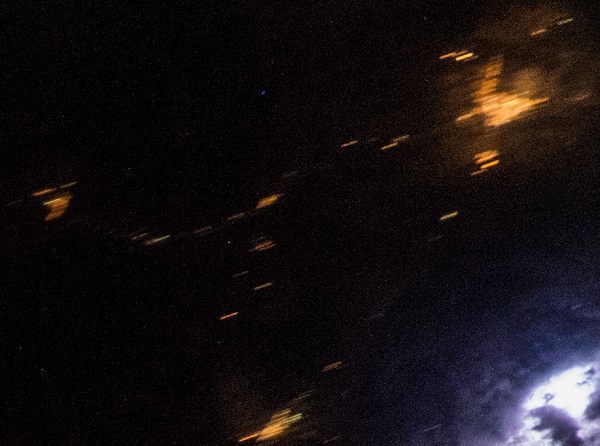It looks like you're using an Ad Blocker.
Please white-list or disable AboveTopSecret.com in your ad-blocking tool.
Thank you.
Some features of ATS will be disabled while you continue to use an ad-blocker.
share:
a reply to: 3danimator2014
I agree. I find it sad that many everyday people keep trying to bring up this guilt thing and say things like "man is a virus that needs to be eradicated off this planet". They play right into the hands of the Globalists.
I agree. I find it sad that many everyday people keep trying to bring up this guilt thing and say things like "man is a virus that needs to be eradicated off this planet". They play right into the hands of the Globalists.
originally posted by: TheConstruKctionofLight
a reply to: 3danimator2014
I agree. I find it sad that many everyday people keep trying to bring up this guilt thing and say things like "man is a virus that needs to be eradicated off this planet". They play right into the hands of the Globalists.
i totally agree
Here's another recent photo from Scott Kelly, and I think you'll understand why I wanted to share it with you:
eol.jsc.nasa.gov...
(rotated to better fit this post)

Technical details:
ISO 8000
Exposure 5 seconds
Aperture f/1.4
Lens AF Nikkor 28mm f/1.4D
My god, it's full of stars!
That's our own galactic home, the Milky Way.
Also seen in this gorgeous time-lapse: www.facebook.com...
(rotated to better fit this post)

Technical details:
ISO 8000
Exposure 5 seconds
Aperture f/1.4
Lens AF Nikkor 28mm f/1.4D
My god, it's full of stars!
That's our own galactic home, the Milky Way.
Also seen in this gorgeous time-lapse: www.facebook.com...
a reply to: wildespace
Is that a the ladder I heard about, that goes down
to earths surface so the occupants can grab some
In n Out once in awhile?
Or I'm I just try'n to get a conspiracy go'in I can put
my name on?
Is that a the ladder I heard about, that goes down
to earths surface so the occupants can grab some
In n Out once in awhile?
Or I'm I just try'n to get a conspiracy go'in I can put
my name on?
edit on Rpm81515v12201500000023 by randyvs because: (no reason given)
When photographing that moonrise in the OP, many other shots were taken (for a timelapse, I guess), and Scott managed to capture the rare and
beautiful lightning phenomenon - sprites.
Here's one: eol.jsc.nasa.gov...

And another: eol.jsc.nasa.gov...

Sprites are large-scale electrical discharges that occur high above thunderstorm clouds, within the altitude range 50–90 km (31–56 mi) above the Earth's surface. Sprites are cold plasma phenomena, akin to fluorescent tube discharges.
Here's one: eol.jsc.nasa.gov...

And another: eol.jsc.nasa.gov...

Sprites are large-scale electrical discharges that occur high above thunderstorm clouds, within the altitude range 50–90 km (31–56 mi) above the Earth's surface. Sprites are cold plasma phenomena, akin to fluorescent tube discharges.
originally posted by: buddha
how can NASA slip up like this?
or have they forgotten that they said
that there is NO way to see stars in space?
proves you Can fool all the people all of the time.
Yes, NASA, the ones who said Apollo craft used starts for navigation. NASA, the ones who put the Hubble in orbit to look at the stars, NASA the ones who release thousands of photos of stars photographed from space totally say that you can't see stars from space. What magical property do you think space has that selectively filters out distant starlight but knows to let sunlight through?
a reply to: captainpudding
They didn't photograph any stars in space, they spectrally imaged them. All photographs from the ISS of stars are taken looking through Earths atmosphere. Let them try photographing stars when looking away from Earth, as we do from the surface. And we know from cislunar space that you need very long exposures with very sensitive film, and then "push" the film during processing, and still get nothing. Your eyes would see not see stars in space, just as Armstrong said.
Magazine TT, Apollo 16 low level light experiment. Exposure times up to 3 minutes.
www.lpi.usra.edu...
NASA, the ones who put the Hubble in orbit to look at the stars, NASA the ones who release thousands of photos of stars photographed from space
They didn't photograph any stars in space, they spectrally imaged them. All photographs from the ISS of stars are taken looking through Earths atmosphere. Let them try photographing stars when looking away from Earth, as we do from the surface. And we know from cislunar space that you need very long exposures with very sensitive film, and then "push" the film during processing, and still get nothing. Your eyes would see not see stars in space, just as Armstrong said.
Magazine TT, Apollo 16 low level light experiment. Exposure times up to 3 minutes.
www.lpi.usra.edu...
originally posted by: GaryN
a reply to: captainpudding
NASA, the ones who put the Hubble in orbit to look at the stars, NASA the ones who release thousands of photos of stars photographed from space
They didn't photograph any stars in space, they spectrally imaged them.
Spectral imaging means stretching the light from any given star into a spectrum: cseligman.com...
That's not what you see in Hubble images, where the light from stars was focused onto a digital sensor much like the ones in DSLRs and consumer cameras, producing an actual image of the stars and other celestial objects.
The way you keep deluding yourself and rejecting any information to the contrary (including the fact that Apollo astronauts saw, photographed, and navigated by stars) is quite remarkable.
originally posted by: GaryN
a reply to: captainpudding
All photographs from the ISS of stars are taken looking through Earths atmosphere.
This is not true.
Let them try photographing stars when looking away from Earth, as we do from the surface.
They have, you know this, people have told you.
And we know from cislunar space that you need very long exposures with very sensitive film, and then "push" the film during processing, and still get nothing.
No, you get photos of stars.
Your eyes would see not see stars in space, just as Armstrong said.
No, this is not true, you know it is not true, you've been told this.
onebigmonkey.com...
Magazine TT, Apollo 16 low level light experiment. Exposure times up to 3 minutes.
www.lpi.usra.edu...
How very dishonest of you. Those photos are in all probability of a water dump, not stars. Why not post low level light photographs from Magazine 129 instead?
Or the ones from Apollo 14, 15 and 17.
You know they exist, I've shown you them on my website enough times.
With all due respect, these pics, while quite stunning, are obviously shopped, and for the following reasons
(1) Were the sun to be in the position shown in the pics, "sunlight" from the sun would be spilling over both the water and the landscape on the western side of the photo. You would see the "glow", NOT "lights at night", at least on the western land masses. If nothing else the water there would GLARE the sunlight off as reflection on the closest horizon. That is not happening in these pics...anywhere.
(2) Light energy is clearly invisible without matter present.
If light energy were, in fact, visible without matter, all of space, or at least all of space surrounding our own star, would be lit up like Christmas Eve in Texas.
But it is, instead, black as noir velvet.
We only "see" light radiation because it is refracted through our atmosphere. In a vacuum, light is invisible. All pictures of space clearly tell us this. It is only when this radiation from the sun, which is also not what they tell you it is, hits matter, like our atmosphere, that we can perceive it with the senses that were given us.
I have no idea why NASA is so afraid to disclose this simple fact, but they are.
Maybe it is because it infers that Einstein's theory of relativity was totally wrong...because it is. God forbid we advance.
Because if regular folks actually understood the nature of energy, they would also understand the nature of existence...and then they would know that God does, in fact, exist.
Then that whole thing about the black cube of Saturn would come out.
Can't have people crawling out of the cube last second, can they?
(3) Forgot to mention....
The sun doesn't rise in the west.
It rises in the east.
Soooooo.....The entire east should be lit up like the 4th of July, at least as a sunset, which is the sunrise of the west, if the sun can be seen at that angle from the shuttle. (The sun obviously rises in the west at some point each day. However, if our star can be seen at this angle, there should be more sunlight on the land and sea masses presented. Does that make sense to you all?)
(1) Were the sun to be in the position shown in the pics, "sunlight" from the sun would be spilling over both the water and the landscape on the western side of the photo. You would see the "glow", NOT "lights at night", at least on the western land masses. If nothing else the water there would GLARE the sunlight off as reflection on the closest horizon. That is not happening in these pics...anywhere.
(2) Light energy is clearly invisible without matter present.
If light energy were, in fact, visible without matter, all of space, or at least all of space surrounding our own star, would be lit up like Christmas Eve in Texas.
But it is, instead, black as noir velvet.
We only "see" light radiation because it is refracted through our atmosphere. In a vacuum, light is invisible. All pictures of space clearly tell us this. It is only when this radiation from the sun, which is also not what they tell you it is, hits matter, like our atmosphere, that we can perceive it with the senses that were given us.
I have no idea why NASA is so afraid to disclose this simple fact, but they are.
Maybe it is because it infers that Einstein's theory of relativity was totally wrong...because it is. God forbid we advance.
Because if regular folks actually understood the nature of energy, they would also understand the nature of existence...and then they would know that God does, in fact, exist.
Then that whole thing about the black cube of Saturn would come out.
Can't have people crawling out of the cube last second, can they?
(3) Forgot to mention....
The sun doesn't rise in the west.
It rises in the east.
Soooooo.....The entire east should be lit up like the 4th of July, at least as a sunset, which is the sunrise of the west, if the sun can be seen at that angle from the shuttle. (The sun obviously rises in the west at some point each day. However, if our star can be seen at this angle, there should be more sunlight on the land and sea masses presented. Does that make sense to you all?)
edit on 16-8-2015 by NaturalHealer because: Forgot to
add stuff.
a reply to: onebigmonkey
Appologies to the OP if I go a little off track here, just wanted to show this bit of transcript to OBM:
So nothing was visible through the scope, but was clear as a bell in the sextant. That confirms my understanding of how they worked. The Star Trackers optical data was merged with the sextants, so they could see what the Star Tracker was detecting, but the scope itself, with just simple optics, could not see anything. Useless. Ordinary telescopes see nothing in space, which is why they don't use them. The images that do show more stars, or star trails, are due to the effects of the Sun moving closer to rising behind the Moon, and the solar radiation, not visible light, energises the Lunar atmosphere and makes the stars in the line of sight more visible, a similar process to changing the grid biasing voltage in the Vidicon. And the same process occurs in Earths atmosphere, which is why the stars imaged from the ISS are brighter the closer to Earths rim they are. If you could slowly pan the camera tp point more into space, the stars would fade and disappear altogether, long before the camera was pointing into deep space, away from Earth.
@wildespace
Yes, you are correct, the sensors are similar to the ones in a DSLR camera, but it is the optics that are completely different, and that is the Top Secret stuff. The optics, and the associated computer software have to be able to put enough of the wavefront onto a pixel in order to kick off an electron, and the complexity of those optics and software is incredible. It is similar to the Star Tracker technology, which is still a closely guarded secret because of the military (ICBM) applications.
Appologies to the OP if I go a little off track here, just wanted to show this bit of transcript to OBM:
008 10 48 Mattingly (onboard): Okay, John. I'm gonna see what I can do here. Let me see if I can find me a G&C Checklist, P23.
008 11 23 Mattingly (onboard): By golly, it's right there. Some things we do pretty well, I guess. This program has figured out how to find stars.
008 11 39 Young (onboard): Well, I'll tell you something, you guys. There may be a star out there, but I sure don't see it.
008 11 45 Mattingly (onboard): Even in the sextant?
008 11 46 Young (onboard): Oh, yeah, it's right in the middle of the sextant.
008 11 47 Mattingly (onboard): What'd you get for (garble)...
008 11 48 Young (onboard): It's (garble).
008 11 49 Duke (onboard): (Garble).
008 11 50 Young (onboard): Sure ain't in the telescope, Ken. 008 11 51 Duke (onboard): Oh...
008 11 52 Young (onboard): It's right in the sextant...
008 11 53 Duke (onboard): Oh, yeah; and it's fantastic.
008 11 54 Mattingly (onboard): But there's...
008 11 55 Duke (onboard): Oh, it's just great.
008 11 57 Mattingly (onboard): But there's just - that telescope is just useless unless you want to look at the quad or the radar.
008 12 01 Young (onboard): Yeah, but what star is it?
008 12 02 Mattingly (onboard): It's 40.
So nothing was visible through the scope, but was clear as a bell in the sextant. That confirms my understanding of how they worked. The Star Trackers optical data was merged with the sextants, so they could see what the Star Tracker was detecting, but the scope itself, with just simple optics, could not see anything. Useless. Ordinary telescopes see nothing in space, which is why they don't use them. The images that do show more stars, or star trails, are due to the effects of the Sun moving closer to rising behind the Moon, and the solar radiation, not visible light, energises the Lunar atmosphere and makes the stars in the line of sight more visible, a similar process to changing the grid biasing voltage in the Vidicon. And the same process occurs in Earths atmosphere, which is why the stars imaged from the ISS are brighter the closer to Earths rim they are. If you could slowly pan the camera tp point more into space, the stars would fade and disappear altogether, long before the camera was pointing into deep space, away from Earth.
@wildespace
That's not what you see in Hubble images, where the light from stars was focused onto a digital sensor much like the ones in DSLRs and consumer cameras, producing an actual image of the stars and other celestial objects.
Yes, you are correct, the sensors are similar to the ones in a DSLR camera, but it is the optics that are completely different, and that is the Top Secret stuff. The optics, and the associated computer software have to be able to put enough of the wavefront onto a pixel in order to kick off an electron, and the complexity of those optics and software is incredible. It is similar to the Star Tracker technology, which is still a closely guarded secret because of the military (ICBM) applications.
originally posted by: GaryN
So nothing was visible through the scope, but was clear as a bell in the sextant.
On that one occasion. Cherry picking doesn;t prove anything.
That confirms my understanding of how they worked. The Star Trackers optical data was merged with the sextants, so they could see what the Star Tracker was detecting, but the scope itself, with just simple optics, could not see anything. Useless.
You understand nothing.
The telescope and sextant were part of the same thing, the guidance computer. The scope was a simple 1 power device (in other words no magnification, essentially just a spotting device), the sextant a 28 power device. Stars were aligned in the optics manually by an astronaut with his actual eyes who clicked a button on a star and told the computer which star it was. No automatic tracker or detection.
You conveniently ignore the reports where astronauts say they can see stars with the naked eye (which you claim is impossible) but not the scope.
Ordinary telescopes see nothing in space, which is why they don't use them.
Prove it.
The images that do show more stars, or star trails, are due to the effects of the Sun moving closer to rising behind the Moon, and the solar radiation, not visible light, energises the Lunar atmosphere and makes the stars in the line of sight more visible, a similar process to changing the grid biasing voltage in the Vidicon.
Made up nonsense with no basis in reality whatsoever. How do you explain the image I linked to showing Venus Mars and Saturn taken in cislunar space with no moon in shot?
And the same process occurs in Earths atmosphere, which is why the stars imaged from the ISS are brighter the closer to Earths rim they are. If you could slowly pan the camera tp point more into space, the stars would fade and disappear altogether, long before the camera was pointing into deep space, away from Earth.
Again, made up nonsense.
a reply to: NaturalHealer
Total BS we see light in the same way a digital camera works light sensitive cells in our eyes (senor) produce an electrical signal which is sent along optic nerve to our brain (camera cpu) wich forms the picture.
Yes space is pitch black unless something emits , reacts with or reflects light then we will see it.
Total BS we see light in the same way a digital camera works light sensitive cells in our eyes (senor) produce an electrical signal which is sent along optic nerve to our brain (camera cpu) wich forms the picture.
Yes space is pitch black unless something emits , reacts with or reflects light then we will see it.
edit on 17-8-2015 by wmd_2008 because: (no reason given)
originally posted by: NaturalHealer
With all due respect, these pics, while quite stunning, are obviously shopped, and for the following reasons
(1) Were the sun to be in the position shown in the pics, "sunlight" from the sun would be spilling over both the water and the landscape on the western side of the photo. You would see the "glow", NOT "lights at night", at least on the western land masses. If nothing else the water there would GLARE the sunlight off as reflection on the closest horizon. That is not happening in these pics...anywhere.
It's not a photo of a sunrise; the bright object is the overexposed Moon. It's a night-time shot, with long exposure, large aperture, and high ISO.
(2) Light energy is clearly invisible without matter present.
It's visible/detectable when it hits the eye/camera sensor. So, we either see direct light from a source like star or lamp, or see light reflected off something. Space is (mostly) black because there's hardly anything to reflect light.
a reply to: Spacespider
You can see stars because it is a time exposure. Note the area in the rectangle:

Here it is blown up:

The city lights have been blurred into streaks. The stars are not as spread out because the are much, much further away. I would guess this is about a five second exposure. Yes, absolutely you can see and photograph stars from space... if you know how to operate a camera and that's what you're interested in seeing or photographing. (He was probably more interested in getting the city lights to look dramatic than to photograph the stars.)
You can see stars because it is a time exposure. Note the area in the rectangle:

Here it is blown up:

The city lights have been blurred into streaks. The stars are not as spread out because the are much, much further away. I would guess this is about a five second exposure. Yes, absolutely you can see and photograph stars from space... if you know how to operate a camera and that's what you're interested in seeing or photographing. (He was probably more interested in getting the city lights to look dramatic than to photograph the stars.)
new topics
-
Speaking of Pandemics
General Conspiracies: 26 minutes ago -
Stuck Farmer And His Queue Jumping Spawn
Rant: 35 minutes ago -
Paradox of Progress
Ancient & Lost Civilizations: 8 hours ago -
Joe Biden gives the USA's Highest Civilian Honor Award to Hillary Clinton and George Soros.
US Political Madness: 11 hours ago -
Winter Storm
Fragile Earth: 11 hours ago
top topics
-
Joe Biden gives the USA's Highest Civilian Honor Award to Hillary Clinton and George Soros.
US Political Madness: 11 hours ago, 13 flags -
What Is 'Quad Demic'? Mask Mandate Returns In These US States
Diseases and Pandemics: 17 hours ago, 11 flags -
Winter Storm
Fragile Earth: 11 hours ago, 7 flags -
A great artist and storyteller, for kids of all ages
General Entertainment: 14 hours ago, 6 flags -
Paradox of Progress
Ancient & Lost Civilizations: 8 hours ago, 6 flags -
Biden Face Planted Somewhere
Politicians & People: 13 hours ago, 5 flags -
Stuck Farmer And His Queue Jumping Spawn
Rant: 35 minutes ago, 0 flags -
Speaking of Pandemics
General Conspiracies: 26 minutes ago, 0 flags
active topics
-
FIEND SLASHED: Sara Sharif’s killer dad ‘has neck & face sliced open with jagged tuna tin lid
Mainstream News • 21 • : Asktheanimals -
Post A Funny (T&C Friendly) Pic Part IV: The LOL awakens!
General Chit Chat • 7989 • : Flyingclaydisk -
A great artist and storyteller, for kids of all ages
General Entertainment • 2 • : Asktheanimals -
Nigel Farage's New Year Message.
Politicians & People • 21 • : gortex -
Speaking of Pandemics
General Conspiracies • 2 • : Flyingclaydisk -
Stuck Farmer And His Queue Jumping Spawn
Rant • 0 • : TimBurr -
The Future of fashion .
Social Issues and Civil Unrest • 20 • : Flyingclaydisk -
NJ Drones tied to Tesla explosion at Trump Las vegas
General Conspiracies • 46 • : Flyingclaydisk -
Tesla Cybertruck Explodes in Front of Trump Hotel in Las Vegas
Mainstream News • 222 • : Flyingclaydisk -
The Why Files Lacerta Reveals the Truth of our Creation
Aliens and UFOs • 13 • : Lazy88
